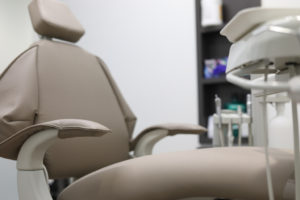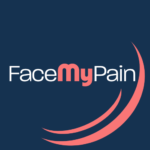Why Are Women More Susceptible to TMJ Pain?
Do you have frequent headaches, shoulder tension, or tightness in your jaw or neck? This may just be a side effect of your stressful lifestyle, and can be relieved or cured with a good massage or glass of wine—but they could also be symptoms of temporomandibular joint (TMJ) disorder, also known as TMD. While receiving a TMD diagnosis is definitely unpleasant, it can also mark a turning point: the start of a life where you are not constantly beleaguered with chronic pain and discomfort.
Over 10 million Americans suffer from some form of TMJ disorder. Of those who suffer from the most severe and chronic forms, 90% are women. According to Terrie Cowley, president and co-founder of The TMJ Association, women are twice as likely as men to report dysfunction and pain of the jaw, and three times as likely to suffer to the point where they need to seek care.
When TMJ issues arise, it may not seem like much: a dull, aching pain in the jaw, sometimes even extending into the neck and shoulders; tight jaw muscles; difficulty opening the jaw wide or closing it completely; headaches; ear pain; and a feeling of fullness or water in the ear. This is perhaps part of why those who suffer from TMJ disorders wait so long to seek help—it’s easy to assign any number of those symptoms to circumstantial factors such as dehydration or weather.
Some people with TMJ disorders experience less pain, but suffer more mechanical problems, such as problems chewing, frequent clicking or popping of the jaw joint, or a bite that can only be described as feeling wrong somehow. These issues are also legitimate and worth bringing to the attention of your doctor or dentist. You don’t have to live like this!
Diagnosing TMJ Disorders
Samantha, a 31-year-old woman living in Connecticut, said, “it took a long time to figure out what was causing my pain. My husband finally took me to the ER after realizing I was taking 25 tablets of Tylenol a day just to get through.”

Anti-inflammatories may help TMJ Pain in the short term.
One of her biggest struggles with TMJ was receiving the initial diagnosis. Samantha said she “went to doctor after doctor and kept getting prescribed stronger pain medication which didn’t help alleviate the problem, it just masked the pain.” When she finally found a doctor who took an X-ray of her jaw, it took very little time to reach a diagnosis. Once that finally happened, “my fantastic doctor figured out what medications would help ease the tension rather than mask my pain symptoms.”
One major hurdle in receiving the diagnosis is the fact that there is not a simple scientifically proven test to diagnose TMJ disorders. Many people, especially women, must jump through similar hurdles before someone provides an explanation and treatment for the chronic issue. Doctors first must rule out other potential underlying illnesses, and then can only make a TMJ disorder diagnosis based on a combination of patient-reported symptoms and examination of the face, head, neck, and jaw.

FaceMyPain.com links patients to caring TMJ Providers.
Each TMJ disorder symptom can be indicative of something else entirely. Facial pain, for example, could indicate TMJ, but it could also indicate a sinus or ear infection, decayed or abscessed teeth, facial neuralgia, and even tumors. Diagnosing yourself via WebMD for any medical problem is generally discouraged, but doubly so for TMJ disorders. You never know what might be hiding underneath chronic discomfort, so it’s imperative to see a doctor as soon as possible.
Hormonal and Biological Factors
TMJ disorder symptoms are most likely to appear in women of childbearing age, between the ages of 20 and 35. Though there is little research published on why young women are particularly prone to experiencing TMJ issues, some scientists theorize that hormonal differences between men and women are a factor. Estrogen receptors exist in the jaw, as well as in the brain, which could exacerbate both the actual pain receptors as well as the brain’s perception of said pain. Taking estrogen supplements is another risk factor in TMJ disorders.
Women also tend to have lower levels of progesterone, which can have a detrimental impact on bone, collagen, cartilage and certain proteins in the body. This is also why arthritis is more common in women.
Social, Cultural, and Behavioral Factors
Aside from biological factors, there are social, cultural, and behavioral factors at play for people who suffer from TMJ. The main one? Stress. Women are much more likely than men to internalize stress as they go about their daily lives, which can lead to behaviors like grinding teeth and clenching muscles to ‘be nice’ and avoid shouting. Repeated teeth grinding and clenching are two of the most common causes of TMJ disorders.

Learn to relax your mind/body, beginning with your facial muscles.
Your favorite pair of heels may also sadly be a contributing factor. According to the theory known as body linkage, the body works as a chain with three interconnected rings. The top ring is that of your head, neck, and spine. The middle ring contains the back muscles and vertebra. The bottom ring is comprised of the muscles of the feet, ankles, and legs. All the rings must work in alignment, and if one is out of alignment, the other two by definition are out of alignment as well.
In that way, undue stress on our ankles or feet (even when they look super cute) can cause problems in the head and neck, as well as general issues of posture. The way the body is forced to stand while wearing heels brings the head, neck, and chest forward and out. The center of gravity is also altered, which changes the alignment of the hips and spine. While sky-high heels may have helped the Kardashians achieve their success, it has the opposite effect on your skeleton.
Other postural influences include carrying heavy bags and spending long periods of time with the head angled down to look at your phone or computer screen.
A study conducted in Bergen, Norway took saliva samples from people suffering from TMJ disorders and found higher incidences of stress hormones than non-sufferers. The TMJ patients also were more likely to experience anxiety and depression.
Samantha told me about how she experiences flare-ups of her TMJ issues in times of major stress. “I have to be mindful of that and consciously remember to unclench my jaw,” she said. She also has to take preventative medicine prescribed by her doctor “to ensure that [she doesn’t] have to take a week off from work to recover from a flare-up.” She recalled incidences of leaving trips early because she left her mouth guard at home. Her mouth guard had become a vital part of her TMJ care kit, helping to alleviate symptoms such as clenching her mouth and grinding her teeth. Without the guard, it was much more difficult for her to relax her jaw fully and prevent a flare-up. “The thought of sleeping without it put me into a panic,” she said, “fearful about how bad the pain might be if I didn’t.”
Options for Women Suffering from TMJ Pain
For most people, TMJ disorder symptoms will eventually abate with or without treatment. Usually, some self-care at home will be enough. According to a survey conducted by The TMJ Association, the best way to alleviate TMJ pain is with a heating pad or hot pack. Other things you can do for your TMJ discomfort include using ice packs, eating soft foods, and taking over the counter medication such as ibuprofen. There are also exercises that you can do in the comfort of your own home, while sitting in the car in traffic, or while watching a movie.
An easy way to remember some easy things you can do to help alleviate the pain during a flare-up of TMJ pain is the mnemonic HEALS.

Self-care includes rest and massage
H: Heat, cold, and massage
Applying heating pads or ice packs up to four times a day can help with the pain. Generally, ice is used during the first 24 hours to reduce swelling, followed by moist heat for comfort—but whatever order works best for you is the best thing to do. Some people like to alternate between heat and cold.
E: Exercises
Our minds and bodies love yoga for a little stress relief—so it follows that our jaws could use a little yoga, as well. Placing two fingers between your front teeth and holding for 10 seconds several times a day can gradually help increase the range of motion in your jaw. Throughout the day, stay mindful that your jaw position is relaxed and comfortable. Like any new exercise plan, it’s good to bring it up with your doctor before committing to it.
A: Analgesics
Taking an over-the-counter pain reliever as soon as possible will benefit the function of your jaw and helps ease the pain.
L: Lifestyle
Making healthy choices on a daily basis helps promote healing of the jaw. Be mindful of the textures of the food you eat and your chewing habits. For many modern women, one of the hardest lifestyle improvements to achieve is also one of the most crucial: getting plenty of sleep! You may also want to talk to your doctor about getting a mouthguard to wear overnight.
S: Strain
This may be the hardest part of the acronym, especially at first, but also the one you can’t skip. Clenching or grinding your teeth, resting your teeth together, gum chewing, biting the inside of your mouth (lips, cheek, tongue), resting your jaw on your hand, pushing your tongue against your teeth, straining the jaw, and opening your mouth too wide or for too long are all habits that must be avoided.

Soft foods and smoothies provide an opportunity for the jaw to rest.
The other mnemonic to remember when it comes to TMJ disorders is TATU: Teeth Apart, Tongue Up. This is the proper relaxed posture that your mouth and jaw should be in the majority of the time. Put your tongue behind your front teeth and keep your jaw relaxed—you can find this position by saying the letter ‘N.’ Keeping your jaw in this position most of your waking hours can go a long way in alleviating TMJ disorders and preventing future flare-ups.
Women are much more likely to suffer from other chronic pain disorders, such as fibromyalgia, chronic fatigue syndrome, and migraines, and having a diagnosis of one of the former makes it more likely that you will also eventually experience a TMJ disorder. The co-morbidity of these diagnoses is a real chicken or the egg question; each chronic issue is complex in its own right, and it’s hard to pinpoint its exact origins, let alone which chronic issue may be influencing the others and vice versa.
The old adage that a woman’s work is never done is a bittersweet truth. But chronic jaw pain is not something even the busiest boss babe among us should be forced to live with or adapt to; that busy schedule requires a bit of mindfulness and self-care—sometimes in the form of doctor’s visits. The reasons women are more likely to suffer from TMJ pain are tangled and multi-faceted. Research on the subject is still in its infancy, and prevention and true understanding may still be a long way off—but there is a glimmer of light at the end of the tunnel for women with TMJ pain, as we learn more about its causes, prevention, and treatments.
At Face My Pain.com, we understand how important it is to get the correct diagnosis fast so that you can find solutions fast. We help you connect with the right doctor so that you can deal with TMJ and get back to your busy life—pain free!
FaceMyPain opens a path to care with qualified doctors and other healthcare providers who understand the complexities of facial pain and can help you find relief and healing.
Treatment providers featured in the FaceMyPain directory are orofacial pain specialists, neurologists, osteopaths, dentists, oral surgeons, physical therapists, chiropractors, and other providers dedicated to treating facial pain conditions.





